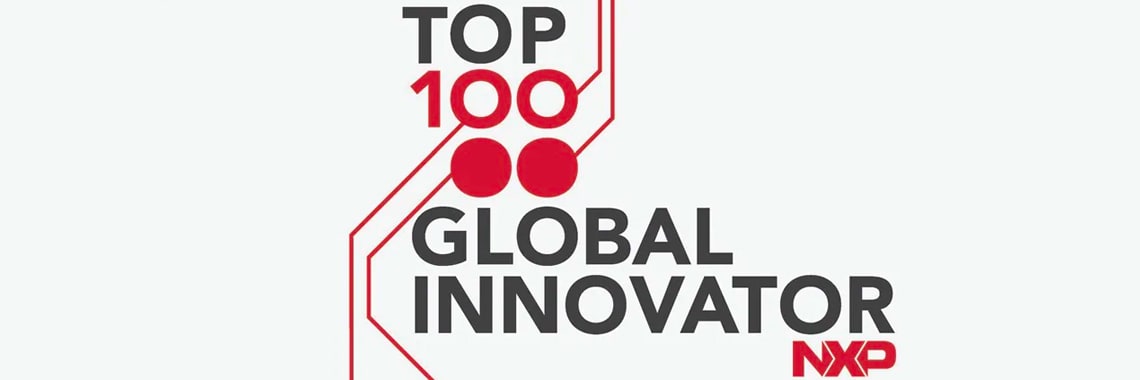This week, it was announced that NXP was included in the list
of 2016 Top 100 Global Innovators compiled by Clarivate Analytics. What does this actually mean? Is it really a
special distinction or just another list? Just how it is decided who makes the grade?
Clarivate Analytics is the former Intellectual Property and Science business of Thomson Reuters. Six years ago, it started compiling and publishing a
Top 100 Global Innovators list. The ranking includes global companies and institutes based on a thorough study of
their patenting performance.
These criteria make sense, because true innovation requires unique solutions and discoveries. An associated patent,
granted by an independent patent office, is legal recognition of the uniqueness of an invention. It also protects
the owner from infringement by others.
The number of patent applications by a company is a good indication of how innovative it is. It’s not the only
one, however, as not every application is granted. For example, many applications are not approved because another
party has already applied for a patent for the invention, or because it is simply not unique enough.
The most relevant consideration for the researchers at Clarivate Analytics is how many patent applications a company
has submitted, as well as the number that is actually granted.
The recent merger with Freescale obviously helped to increase our patent volume, but there are two more criteria to
qualify for the Top 100.
Applying for a patent is costly and requires a lot of effort. If an invention has a lot of commercial potential, then
it’s worthwhile to submit various patent applications to different national patent offices worldwide in a
coordinated way. This way of protecting an invention in major world markets is an indication of an
invention’s potential business value, and it is used as a third criterion for the Top 100 ranking.
In order to measure the global influence of a patent, it is useful to look at the number of times it was cited by
other companies when applying for patents for their own inventions. By citing earlier patents, a company can
describe how their invention builds further on previous innovations by others. The more often a patent is cited, the
more influential it is in a particular field of expertise and in associated markets.
Bright minds. Bright futures. NXP team members create breakthrough technologies that advance our world.
The future starts here.
In summary, being ranked among the Top 100 Global Innovators is not just based on the number of granted patents, but
also on the commercial impact of the inventions involved. This is in accordance with one of the definitions of
innovation: “Innovation is Invention times Market Acceptance.”
In 2015, the Top 100 innovators spent more than $227 billion on R&D and generated more than $4 trillion in
revenue. That’s over 5.5% of sales spent on R&D. In semiconductors, the R&D/Sales rate is even
higher, roughly 15% or around $1.5 billion annually at NXP. We need a very high return on that investment to be
successful in our business. Therefore we need to invest in inventions and developments that help us create a
competitive advantage. A strong patenting strategy and patent portfolio is a key success factor to achieve that.
Being recognized by a prestigious organization like Clarivate Analytics as a Top 100 Global Innovator is
acknowledgment of the powerful position we have achieved. It contributes to our reputation as an innovative
front-runner and makes us a more attractive partner, supplier and employer.
Surely that’s something we can all be proud of!





